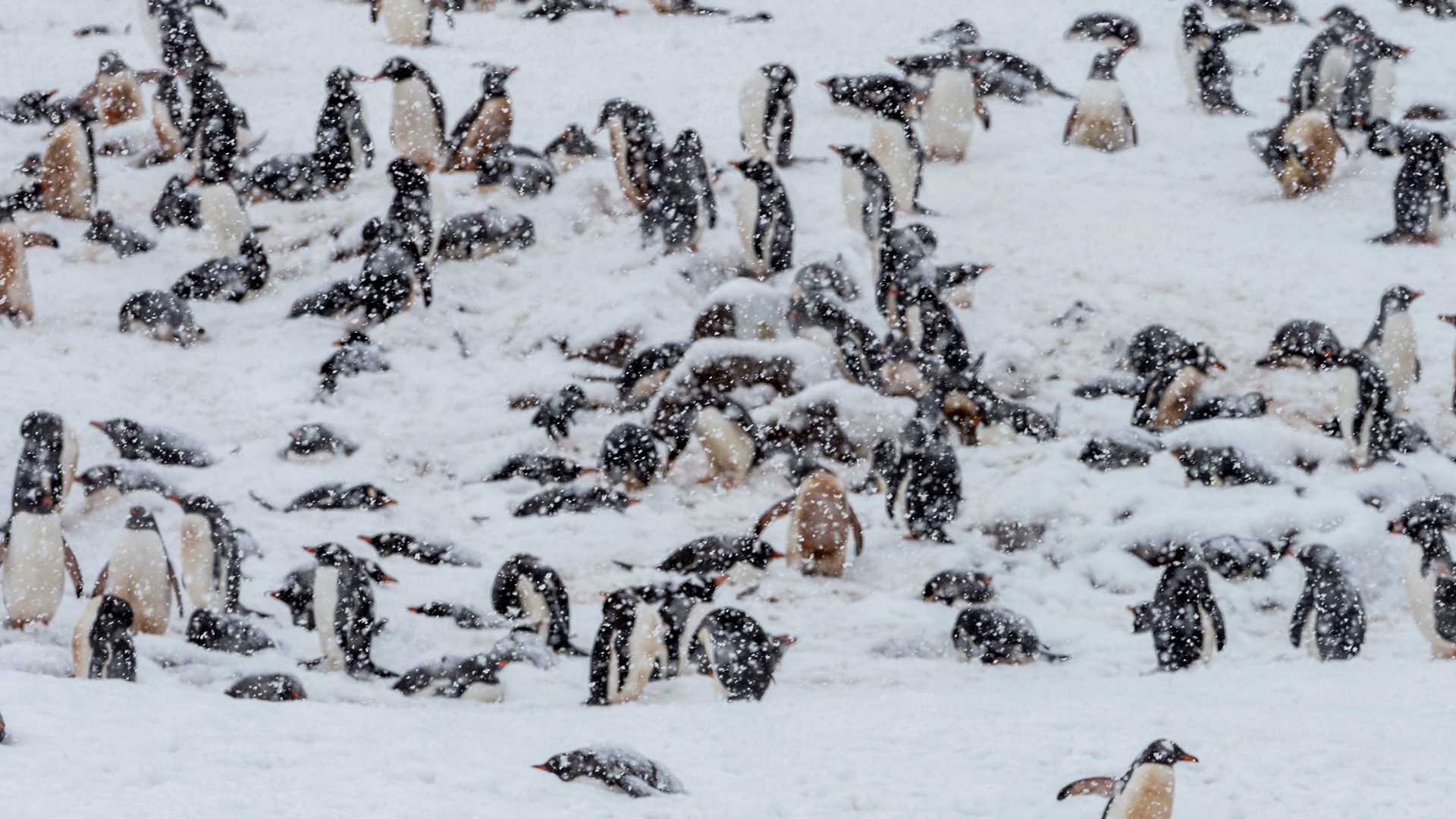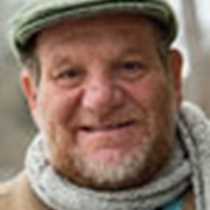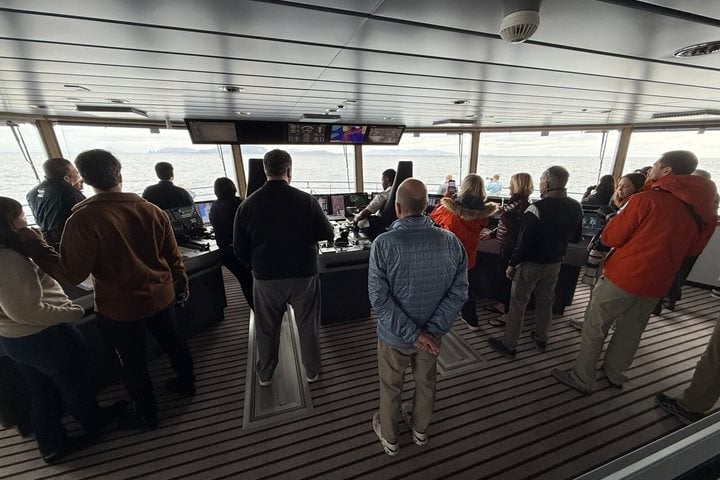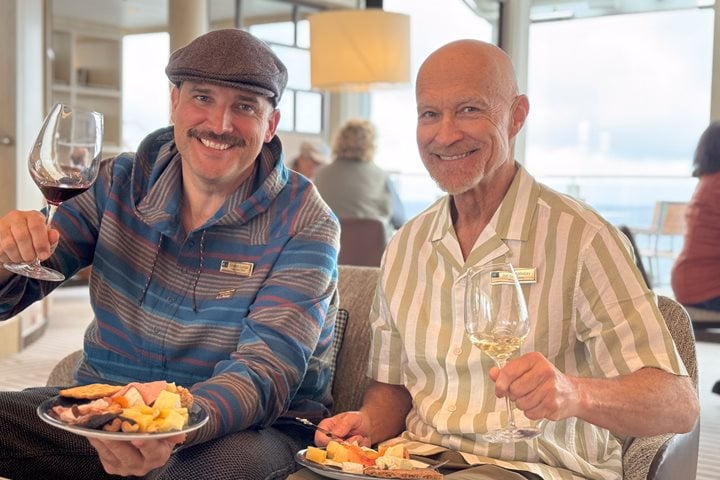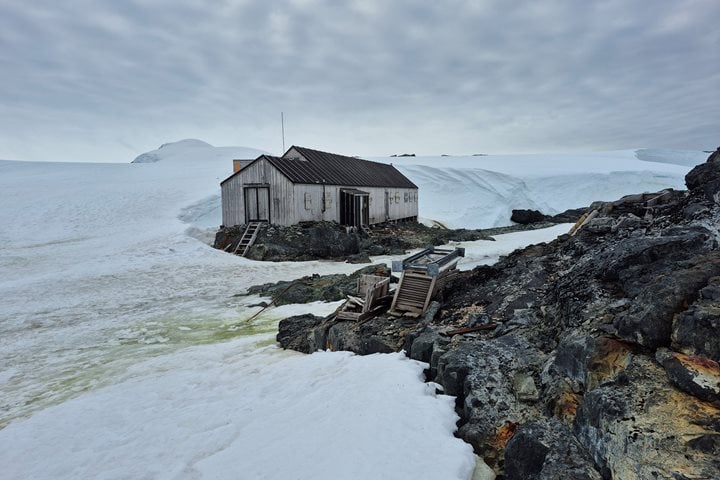When we woke up this morning we were expecting foul weather. Peter, our expedition leader, had warned us about the weather in the briefing the night before. So, as we peered out our windows, the blowing snow was not unexpected. But, we were prepared – we’re on an expedition, not a cruise. Snow impaired our visibility, but not our mission.
The shore of Cuverville Island was just visible through the snow…well, almost. Our Zodiac headed to shore, weaving through large chunks of ice as the shore team guided us to a proper landing – even wading out into thigh-deep water to do so! On shore, we quickly removed our life jackets and were immersed into a wonderful winter landscape of falling snow and gentoo penguins. What a magical morning.

